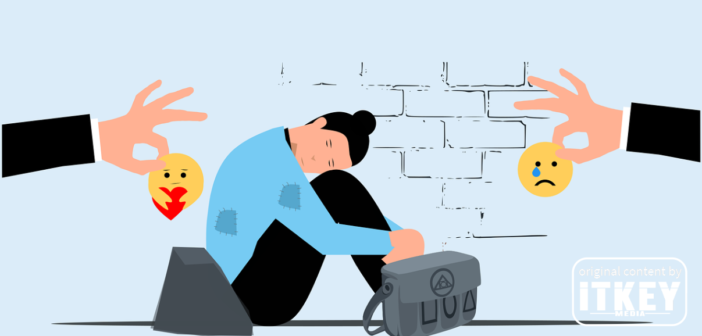The post was originally published in Polish on Szymon’s LinkedIn profile. Szymon kindly agreed to republish what we think is of great value to our readers.
The bankruptcy of a company is now perceived as nothing special. More so, this is nothing more than an important lesson, knowledge, and even value. Putting the company down is like tripping while running. This event is underestimated to such an extent that it is actually only a step on your way to success.

Szymon Janiak, Co-Founder and Managing Partner at Czysta3.VCs
There is no denying that Linstagram and beautiful bootlegger-to-millionaire stories have contributed to this. However, I get the impression that people who present such views were never part of such a process in real life. They don’t know how the psyche gets taken aback when you let your team down again. What happens to self-esteem when you have to tell your family that not only have you earned no money, but you are deeper in debt. Or what it means to tell the most dedicated employee after 3 months without a salary that there will be no funds.
Out of the blue, everyone is incredibly resilient in such situations, copes well, and always smiles about how much they benefit from it. In practice, it’s just a pose that has nothing to do with reality.
I remember how, many years ago, I got the opportunity to observe the bankruptcy of a company through the eyes of a child. This is a truly unique perspective, simple and honest. I understood what bankruptcy means from the private side. When something that has been the norm for years suddenly became unattainable. How incredibly difficult it was to understand why it had always been possible to afford certain things, and now the basic ones were gone.
The founder of a sinking company fades in the privacy of his home, overwhelmed by the situation. They face an immersive abyss from which there is no way out, and then have to leave for work with a glued artificial smile.
In startups, bankruptcy is daily bread because 90% fail within 5 years. However, this is just dry statistics. Just because something is common doesn’t mean it’s not hellishly difficult for the person going through it. Sure, you have to pull yourself together, draw conclusions and move on – that’s the right thing to do, because there is no point in looking for sympathy in business.
In such moments, however, it is worth reaching out to founders, often selflessly, instead of relishing statements like ‘Didn’t I say…’ This builds real relationships that stay for years. Maybe when you find yourself in such a situation, someone will do the same for you – then you begin to understand how small things have great value in difficult moments.
The topic proved incredibly relevant and resonant for the comment section:
It is worth knowing what the bankruptcy process of the company looks like for at least two reasons. Our defense mechanisms effectively protect us from information about the approaching crisis – we deny it, we keep living in hope and don’t want to accept the reality. Well, how can you abandon a business that you’ve been building for several (ten) years?
The second aspect is that it’s good to be able to recognize the impending bankruptcy of the companies with which we work. If a company that has always paid on time starts to be late and can’t tell when it will pay, or a company that was late but was acceptable starts to be months late and contact is poor, then you can be sure something is going on. Only the right reaction can guard against the risk of non-recovery of receivables and joining the list of creditors of a failing company.
In general, the psychology of a debtor is a very interesting issue and it’s beneficial to know how this financial and psychological mechanics works.
– Tomasz Kołkiewicz, Founder at Flobo
Nobody can know what it’s like until they experience it themselves. I had this pleasure at the age of 23. The feeling when the court rejects your application is also priceless, which is why I read such posts with a smile on my face.
– Mike Heller, Founder at Mezator
There’s no art in going through bankruptcy, the art is to pull out a bankrupt company!
– Mikołaj Gubar, Sales Manager Eastern Europe at W. Gröning GmbH & Co.o.
It must be made clear that with weaker mental resistance and lack of support, the bankruptcy of a company leads to depression, abuse of psychoactive substances (alcohol in Poland) in search of relief, serious mental disorders, and even suicide. For some, their company literally means the world. When this world disappears, it’s not easy to regain oneself.
– Cezary Terepka, Key Account Manager at Advatech Sp. z o.o.
I would add one important detail. There are at least 2 types of bankruptcy:
The first kind is the ‘real’ bankruptcy, when we have really burned a lot of money and we are f-d.
But there is also a second kind: controlled bankruptcy. I.e., we could still potentially burn a lot of money, but we are still ‘on the surface’ and in control of the situation. We only bankrupt the company to cut off debts or other problems.
The latter way saves our loved ones from what you described. That is why I think that as early as in high school, in subjects such as ‘Basics of Entrepreneurship’ (and we’ve had those for over 30 years), one should learn about the ‘bankruptcy culture.’ So that the young person knows not only how to set up a company, but also how to get rid of it in a safe way, so that the bankruptcy of the company does not have to turn into consumer bankruptcy and trauma for loved ones.
– Tomasz Klim, Founder at Polskie.AI
I built my first company from scratch in 1996. In 2008, it already made 200 million turnover. Then came the global financial crisis and in 2009 turnover dropped to 30 million. 2010 was just agony, and 07.01.2011 we were declared bankrupt. It wasn’t the end… It was just the beginning of trouble, hundreds of various lawsuits, and, as in my case, the owner is left 100% alone to handle them… Since then I have been fighting for my good name and fortunately, after a dozen or so years, I am building a new business, which has a chance to become even bigger.
But how much it cost me and still costs, only my loved ones and I know… This path from a gigantic misfortune that sticks to you (fortunately, I managed to pay off my employees after a few years) to potential success, is the life that you share with several people. However, the nature of the fighter continuously helps to fight and conquer the impossible.
– Konrad Wojterkowski, Founder at #BeReadyGROUP
The life of any founder is not easy. Of course, it has a lot of advantages, but also dark sides that one simply does not see every day. Every defeat hurts. The bigger the company and the longer on the market, the more. This is a very difficult time. It’s good to have someone next to you who supports and doesn’t judge…
– Izabela Walkowiak, Warehouse Management Director at BGW Sp. z o.o.
Very well-written, but where and how to write about it if our society does not accept losers? None of the creditors investigates the cause, and there may be many – often not resulting from the bankrupt company’s actions. But that’s understandable, because it’s not directly their problem.
If we ask any image advisor on running a social media profile about which creditors post less than flattering words, and a Google search outcome becomes an aggregator of regrets and jokes about the company and the president being fraudsters, no one can give a definitive good advice because there is none. They often cite removing profiles from the media as the only solution.
It should also be noted that an entrepreneur runs or participates in running several companies, and their reputation often follows the person. This causes problems for related companies, which, incidentally, don’t have problems.
Since last year, I have been experiencing this while representing a company, and I have no idea how to deal with it.
Finally, even when you manage to find a solution and be confident that you can pay your debts in the future, there is no person or institution that, as a third party, will provide a fair and reliable distribution of funds among creditors.
– Piotr Żarski, Business and Development Consultant

Szymon Janiak is an investor and a business-driven Managing Director at czysta3.vc, a Venture Capital fund located in Poland. He has over 10 years of experience in the technology sector. Szymon is also a Member of the Supervisory Board at stockbroker Grupa Trinity S.A.





